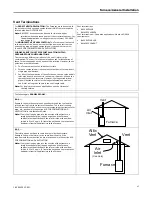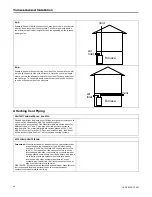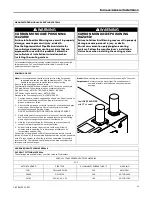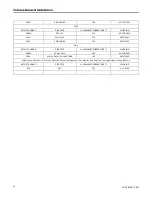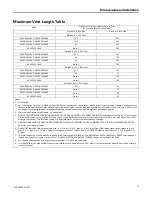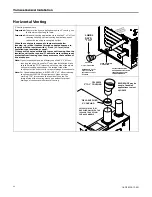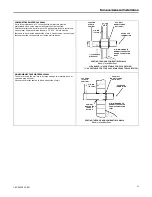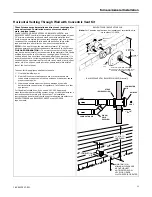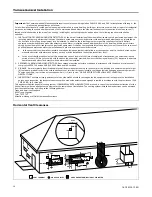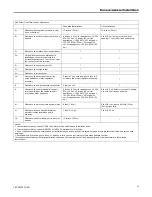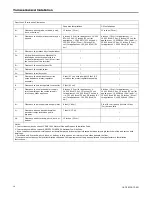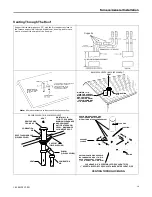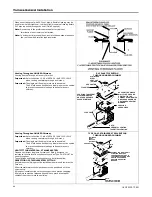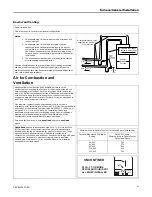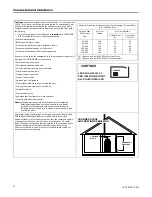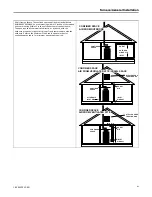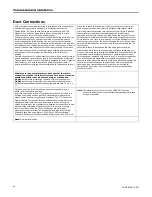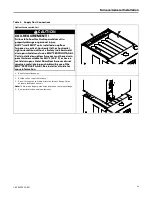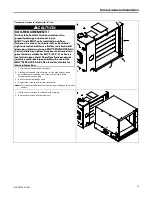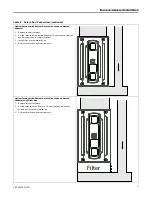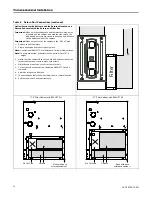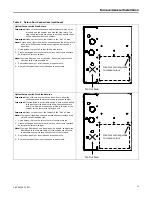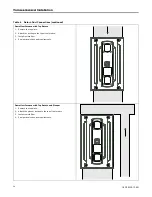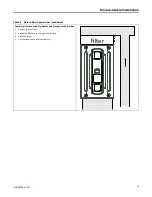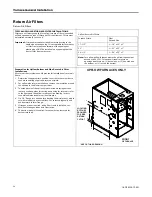
18-CE03D1-1F-EN
41
Downward Venting
Downward Venting
Furnace may be in vertical or horizontal configuration.
Notes:
1.
Condensate trap for vent pipe must be a minimum of 6
inches in height.
2.
Condensate trap for vent and inlet pipe must be
connected into a condensate drain pump; an open or
vented drain; or it can be connected to the outlet hose of
the Furnace condensate trap. Outdoor draining of the
Furnace and coil condensate is permissible if allowed by
local codes.
3.
The condensate trap should be primed at initial start up
prior to heating season operation.
Caution should be taken to prevent drains from freezing or causing
slippery conditions that could lead to personal injury. Excessive
draining of condensate may cause saturated ground conditions that
may result in damage to plants.
6" Min.
Upflow or
Downflow
Furnace
Downward vent length
is limited to a maximum
of 15 equivalent feet.
All horizontal pipes must be
supported at maximum of
3 foot intervals
Slope 1/4" per ft.
Slope 1/4" per ft.
Air for Combustion and
Ventilation
Adequate flow of combustion and ventilating air must not be
obstructed from reaching the Furnace. Air openings provided in the
Furnace casing must be kept free of obstructions which restrict the
flow of air. Airflow restrictions affect the efficiency and safe operation
of the Furnace. Keep this in mind should you choose to remodel or
change the area which contains your Furnace. Furnaces must have a
free flow of air for proper performance.
Provisions for combustion and ventilation air shall be made in
accordance with "latest edition" of Section 9.3, Air for Combustion and
Ventilation, of the National Fuel Gas Code, ANSI Z223.1 / NFPA 54, or
Sections 8.2, 8.3 or 8.4 of CSA B149.1 Installation Codes, and
applicable provisions of the local building codes. Special conditions
created by mechanical exhausting of air and fireplaces must be
considered to avoid unsatisfactory Furnace operation.
Furnace location may be in an
unconfined
space or a
confined
space.
Unconfined
space are installations with 50 cu. ft. or more per 1000
BTU/hr input from all equipment installed. Unconfined spaces are
defined in the table and illustration for various furnace sizes. These
spaces may have adequate air by infiltration to provide air for
combustion, ventilation, and dilution of flue gases. Buildings with tight
construction (for example, weather stripping, heavily insulated,
caulked, vapor barrier, etc.), may need additional air provided as
described for confined space.
Minimum Area in Square Feet for Unconfined Space Installations
Furnace Maximum BTUH Input
Rating
With 8 Ft. Ceiling,
Minimum Area in Square Feet of
Unconfined Space
40,000
60,000
80,000
100,000
120,000
250
375
500
625
750
NO
DOORS
FURNACE
WATER
HEATER
CLOTHES
DRYER
UNCONFINED
50 CU. FT. OR MORE
PER 1000 BTU/HR INPUT
ALL EQUIP. INSTALLED

